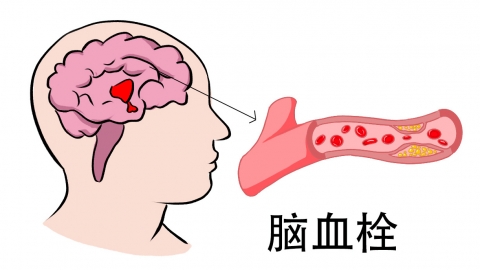What causes hand and foot convulsions after cerebral thrombosis?
In general, hand and foot convulsions after cerebral thrombosis may be caused by emotional abnormalities, muscle spasms, hypocalcemia, cerebral ischemia, or epileptic seizures. It is recommended to seek timely medical consultation to identify the specific cause and receive targeted treatment. Detailed explanations are as follows:

1. Emotional Abnormalities
If patients with cerebral thrombosis remain in abnormal emotional states such as anxiety, depression, or fear for prolonged periods, it may lead to increased neural excitability, causing muscle contractions and resulting in hand and foot cramps. This may be accompanied by symptoms such as mood swings, insomnia, and palpitations. It is recommended to improve emotional well-being through distraction techniques, psychological counseling, and increased communication with others.
2. Muscle Spasms
After the onset of cerebral thrombosis, reduced limb movement and prolonged maintenance of a single posture can easily lead to muscle fatigue and spasms. Particularly during sleep or rest, sudden muscle stimulation, such as changes in limb position, may trigger spasms and convulsions. It is recommended to use local massage and heat application to promote local blood circulation and relieve muscle fatigue and spasms.
3. Hypocalcemia
Patients with cerebral thrombosis often require long-term anticoagulant therapy. If calcium supplementation is neglected during this period, it may lead to calcium deficiency in the body, causing a decrease in serum calcium ion levels, which can result in abnormal muscle twitching and spasms. Symptoms may include osteoporosis, increased fracture risk, and muscle pain. It is recommended to follow medical advice to take calcium supplements such as calcium carbonate D3 tablets, calcium gluconate oral solution, and vitamin D tablets.
4. Cerebral Ischemia
After the formation of cerebral thrombosis, localized cerebral ischemia may occur, affecting normal brain function and impairing neurological function, leading to symptoms such as hand and foot convulsions. This may be accompanied by headache, dizziness, and memory loss. It is recommended to follow a physician's guidance in using medications such as nimodipine tablets, betahistine hydrochloride tablets, and ginkgo biloba leaf tablets for treatment.
5. Epileptic Seizures
Brain damage caused by cerebral thrombosis may affect the function of the cerebral cortex, particularly areas related to motor activity. When abnormal electrical discharges in the brain reach a certain intensity, they can cause epileptic seizures manifested as limb convulsions. Seizures may be accompanied by loss of consciousness and foaming at the mouth. It is recommended to follow medical advice in using medications such as carbamazepine tablets, sodium valproate tablets, and gabapentin tablets to reduce seizure frequency.
After stabilization of the condition, patients are advised to undergo moderate rehabilitation training, such as simple fist-clenching and leg flexion and extension exercises, gradually increasing physical activity to promote blood circulation, enhance muscle strength, and help alleviate convulsive symptoms.




